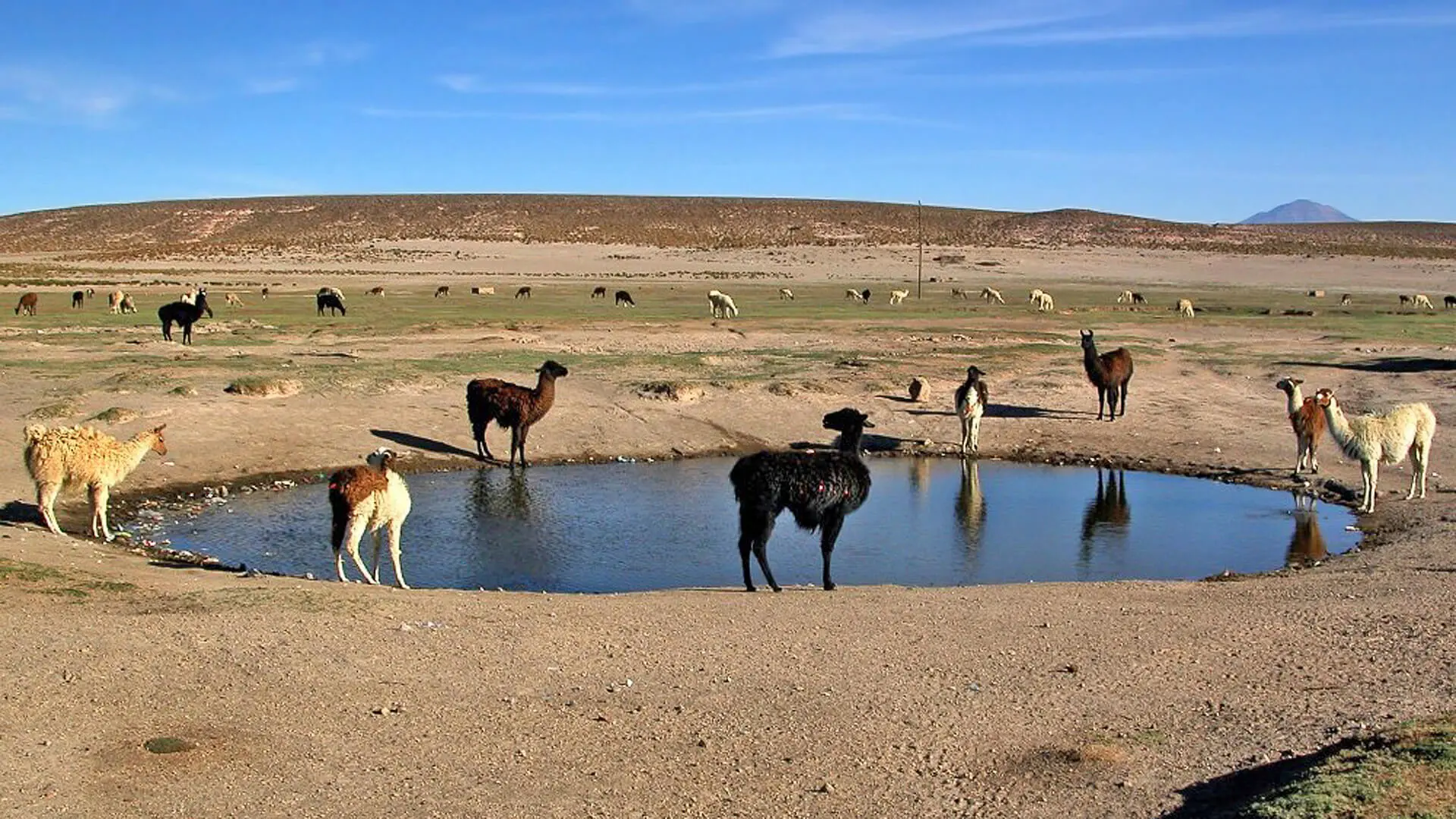
The llama, alpaca, guanaco and vicuna belong to the camelid family, they live in different habitats and have their own way of life. It is quite difficult to distinguish them when you are not initiated. I therefore wrote this article with the aim of letting you know a little more about these typical South American animals, which were already present long before the arrival of the Spanish…
Differences between the llama, alpaca, guanaco and vicuna
First of all, it should be noted, even if it may seem obvious, that these animals are only visible in South America. Vicunas and guanacos have never been domesticated. You will always see them in the wild. So if you see a shepherd accompanied by animals, you are already sure that they are not vicunas or guanacos. Conversely, llamas and alpacas do not exist in the wild (note that often the wild state can be misleading, because there are shepherds who live hundreds of km from towns or villages).
Llama
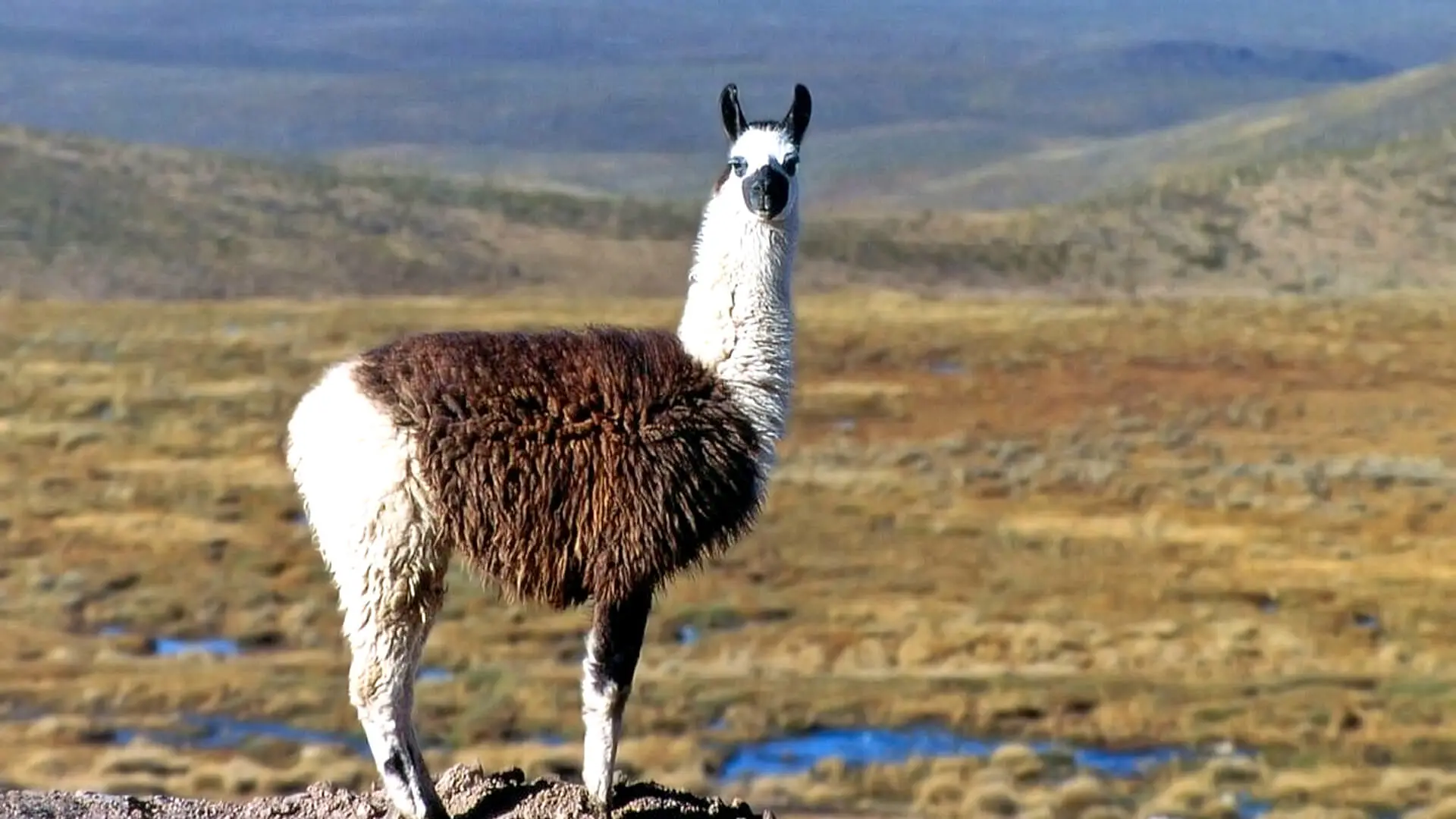
The llama is the best known and is the largest of the four, it’s also the strongest and can measure up to 1.90 m high. The llama is generally used as a transport and cargo animal by native Andean peoples. The “term” llama is often used more broadly (incorrectly) to apply to the four closely related animal species that constitute the South American branch of camelids.
Alpaca
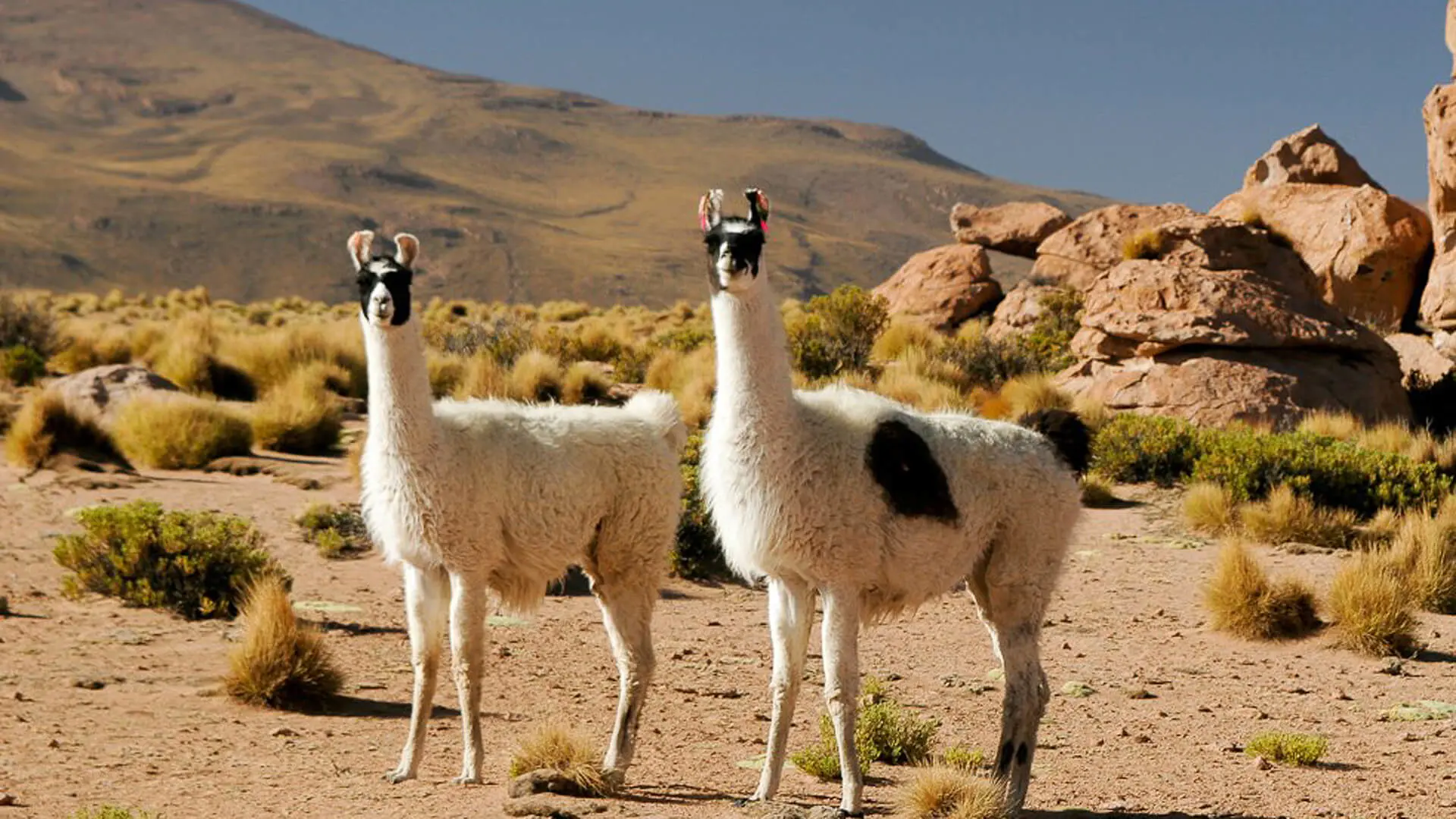
The alpaca is smaller and less strong than the llama. It is very rarely used as a charge animal, on the other hand the alpaca produces a renowned fine wool of quality, much superior to that of the llama, because the alpaca has a much more selective culinary diet. Alpaca wool is thicker and much more durable. Of the four species, the llama and the alpaca are the most difficult to differentiate, moreover, my tip is to observe the head: that of the alpaca is smaller and less stretched than that of the llama. It’s actually very difficult to recognize a llama from an alpaca if you don’t have the two species side by side (to be able to compare)!?
Guanaco
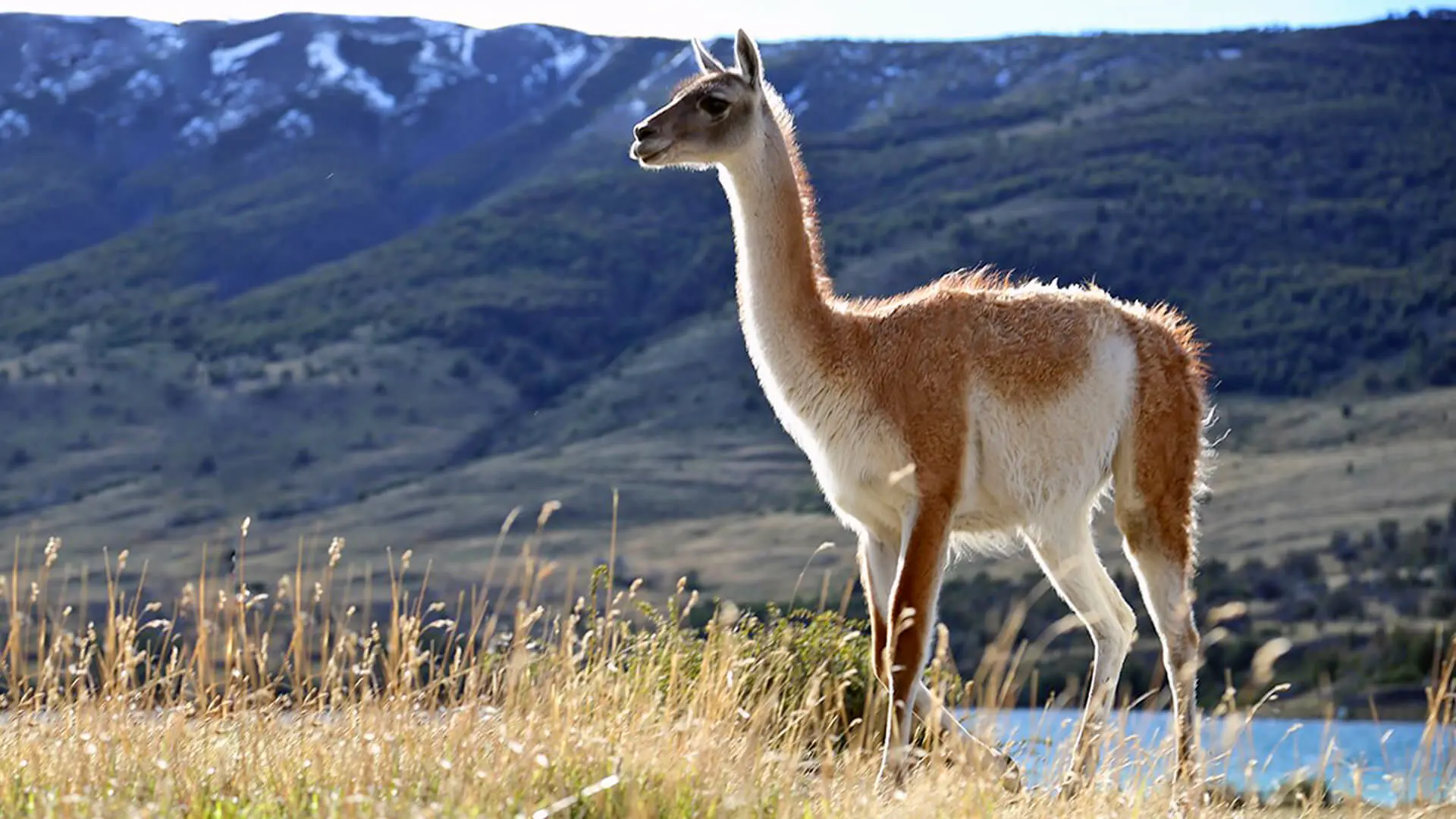
The guanaco is, according to scientists, the wild “version” of the llama and the alpaca, it’s the most “traveling” of the four. In fact, we find it all along the Andes, on the Andean highlands, and also in Patagonia as far as Tierra del Fuego! In Patagonia you will only see guanaco. They live in groups with one dominant male for several females. I would even say that it is also the most “athletic” species. Guanacos have a strong relaxation and are capable of making large jumps, to pass the fences which sometimes intersect their freedom spaces (note that guanaco meat is becoming more and more common… in markets and restaurants).
Vicuna
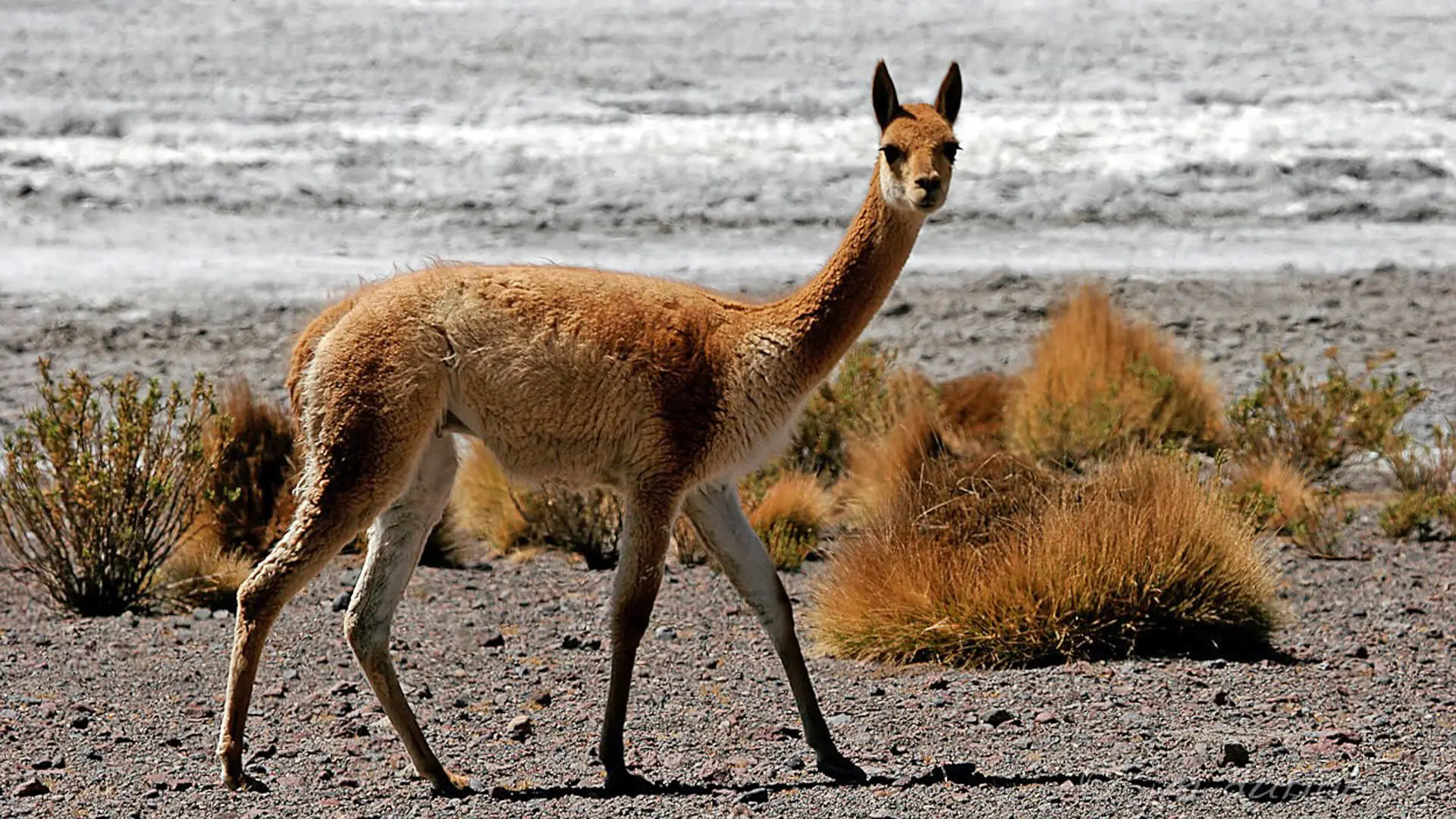
The vicuna is the most graceful and smallest, it’s also the smallest camelid in the world, around 50 kg! It is very easy to distinguish from other species. But don’t be fooled by its fragile appearance, because the vicuña is certainly the most resistant of these four animals. In fact, we find vicuñas up to 5,700 m above sea level!! It is, moreover, of the four species, the one which likes and only lives at altitude. Its favorite playground is from 3,000 to 5,500 m above sea level. Vicuna hair is extremely fine and very resistant. They also live in groups.
Come discover the 4 species in their natural environment!
 English
English Español
Español Français
Français
